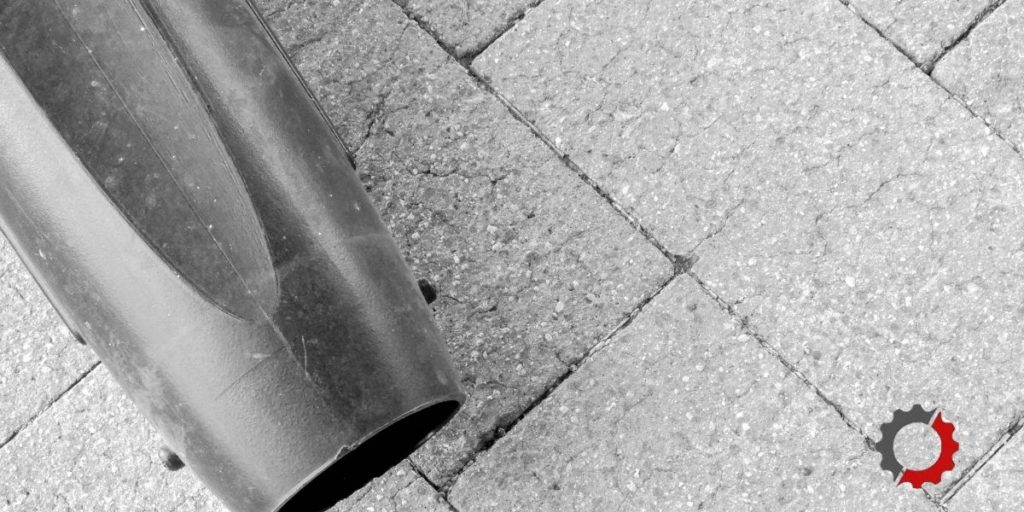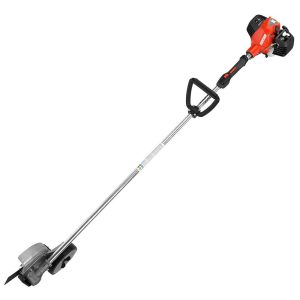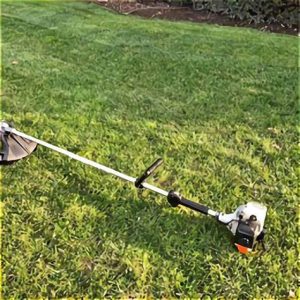How to Service a Leaf Blower: Step-By-Step
With a busy lifestyle, it’s easy to just toss your leaf blower in a corner with good intentions to service it when you find more time. Months later, you still don’t have the maintenance performed on your blower.
Servicing your leaf blower is not an item that should be skipped if you are looking to maintain reliability from your blower.
A leaf blower must be serviced annually to keep it performing at its best. This includes changing the filters, cleaning the unit, replacing the spark plug, and replacing any lost or broken parts.
Servicing your leaf blower can also identify problems developing in your leaf blower that can be fixed before they become problems that can ruin the leaf blower.
Steps to Service a Leaf Blower:
- Gather tools and supplies
- Remove the spark plug & follow safety precautions
- Replace old fuel
- Change engine oil (4-cycle engine)
- Replace air filter
- Replace fuel filter
- Replace the spark plug
- Check the fuel system
- Clean the cooling system
- Clean the exterior
- Tighten loose hardware & replace broken and missing parts

This post may include affiliate links. Purchases made through these links may provide a commission for us, at no extra cost to you. As an Amazon Associate, we earn from qualifying purchases.
Follow all safety instructions provided in your equipment operator’s manual prior to diagnosing, repairing, or operating.Consult a professional if you don’t have the skills, or knowledge or are not in the condition to perform the repair safely.
Table of Contents
Perform Maintenance on a Leaf Blower: Step-By-Step
Step 1: Gather Tools and Supplies to Service a Leaf Blower
- Socket set and screwdrivers
- Fuel filter
- Air filter
- Spark plug
- Clean rags
- Engine oil (4-cycle engine models)
- Drain pan or container to collect oil (4-cycle engine models)
- Protection gear: gloves and safety glasses
Step 2: Remove the Spark Plug & Follow Safety Precautions Before Servicing a Leaf Blower
Before performing any work on your leaf blower, disconnect the spark plug wire, also known as the spark plug boot. Wait for all parts to stop moving. Be careful when working around a hot engine.
Follow the safety precautions listed in your leaf blower operator’s manual.
Step 3: Replace Old Fuel in the Leaf Blower
Gasoline in your leaf blower can go bad and begin to break down after 30 days. If you have fuel older than this in the fuel tank, drain it and add fresh fuel. Running old gas through your leaf blower can cause clogging problems and begin to gum up and corrode the fuel system components.
Most of the gas-powered leaf blowers on the market use 2-cycle engines, but more and more 4-stage blower models are being added each year.
Make sure you know the type of engine your leaf blower is using and add the correct fuel for your engine type. Adding the wrong fuel can cause problems and may even ruin the leaf blower.
- 2-cycle engine
Use a gas and oil mix. Use unleaded gasoline with a minimum octane rating of 89 and a maximum ethanol content of 10% at the correct fuel-to-oil ratio as recommended by the leaf blower manufacturer.Use a 2-cycle premium oil that is ISO-L-EGD and JASO M345 FD certified. You can find more information on gas and oil mix in, “This is the Type of Gas and Oil Leaf Blowers Use”.
- 4-cycle engine
Use unleaded gasoline with a minimum octane rating of 89 and a maximum ethanol content of 10%. 4-cycle (4-stroke) engines have two fill ports, one for oil and one for gas. Oil and gas should never be mixed in a 4-cycle engine.
Add a fuel additive like Sea Foam Motor Treatment to stabilize fuel so it lasts longer than 30 days before it breaks down. This additive not only stabilizes gas but also reduces moisture buildup and helps keep the fuel system clean.
Step 4: Change Engine Oil (4-Cycle Engine) in the Leaf Blower
If you own a leaf blower with a 4-cycle engine, the oil should be changed. Warm oil flows better than cold oil, so start your engine to warm the oil. Don’t forget to reattach the spark plug wire to start the blower and remove the wire once you shut off the blower.
Don’t let the engine get too hot. The oil only needs to be warm. Hot oil can cause burns.
Drain Oil from a Leaf Blower with a Drain Plug
Some oil tanks have a drain plug or bolt located at the bottom of the tank to drain the engine oil. If yours has one, follow these directions:
- Clean any dirt and debris around the oil fill cap and drain plug. You do not want dirt to get into the oil tank.
- Get a drain pan or other item to collect oil and place it under the drain plug.
- Remove the drain plug. There may also be a separate gasket, be careful not to lose it in the oil.
- Allow all oil to drain out of the leaf blower and into the drain pan.
- Reinstall the gasket and drain plug once the oil has finished draining.
- Wipe off any oil that dripped onto the leaf blower.
- Place the leaf blower on a workstation so the engine sits level. Not having the engine level will cause you to not accurately fill the oil to the correct level required.
- Remove the oil fill cap/plug. You may have a gasket that also needs to be removed.
- Fill the with the correct engine oil for your leaf blower. Fill to the fill mark as indicated on the oil tank. If there isn’t a fill mark, you may have to fill it until it reaches the lowest thread on the opening. If you are unsure of the fill level for your blower, refer to the operator’s manual. Not enough engine oil or too little engine oil can cause significant damage.
- Never use a 2-cycle oil in your 4-cycle engine. Find out more about the right oil to use in a 4-cycle leaf blower in this guide.
- Replace the oil cap/plug. Install the gasket before the cap/plug if one is used on your model.
Drain Oil From a Leaf Blower without a Drain Plug
If your leaf blower does not use a drain plug or if it does and you prefer not to use that method, proceed with these steps for draining the engine oil:
- Clean any dirt and debris around the oil fill cap/plug. You do not want dirt to get into the oil tank.
- Get a drain pan or other item to collect oil. Not enough engine oil and too little engine oil can cause significant damage.
- Remove the oil cap/plug. There may also be a gasket that must be removed.
- Tilt the blower toward the oil fill hole to allow all oil to drain into the drain pan.
- Once emptied, place the leaf blower so the engine sits level. Not having the engine level will cause you to not accurately fill the oil to the correct level required.
- Fill the with the correct engine oil for your leaf blower. Fill to the fill mark as indicated on the oil tank. If there isn’t a fill mark, you may have to fill it until it reaches the lowest thread on the opening. If you are unsure of the fill level for your blower, refer to the operator’s manual. Not enough engine oil or too little engine oil can cause significant damage.
- Never use a 2-cycle oil in your 4-cycle engine. Find out more about the right oil to use in a 4-cycle leaf blower in this guide.
- Replace the oil cap/plug. Install the gasket before the cap/plug if one is used on your model.
- Wipe any oil that may have dripped onto the leaf blower.
Step 5: Replace the Air Filter in the Leaf Blower
The air filter is an important component to ensure your leaf blower engine gets clean air. When the air filter isn’t replaced or cleaned regularly, the filter can become plugged causing starting and running issues.
Replace the air filter annually when servicing the leaf blower. Clean your air filter throughout the season and replace it when it becomes extremely dirty, covered in fuel, or damaged.
- Close the choke to keep dirt from falling into the air intake.
- Remove the air filter cover held on by clips, knobs, or screws.
- Remove the air filter being careful not to knock any dirt or debris into the air intake.
- Remove any dirt remaining in the air filter housing and the air filter cover.
- Install a new air filter.
(Some single foam air filters must be coated with filter oil or SAE30 engine oil to help trap dirt. Using oil on some filters will cause them to swell and not perform correctly. Refer to your operator’s manual for care instructions for your type of filter). - Reattach the air filter cover.
Step 6: Replace the Fuel Filter in the Leaf Blower
The fuel filter strains dirt and other contaminants from the fuel to keep them out of the fuel system. If you can’t find your fuel filter, take a look in the fuel tank. It is attached to the end of the fuel line. First, clean around the fuel cap so dirt doesn’t fall into the tank.
“Fish” the filter out of the fuel tank. A clean piece of bent wire works well. Get the filter out of the tank. Hold onto the fuel line and ring clip with one hand while pulling the filter out of the line with the other hand. Be careful to keep the ring clip on the fuel line and not lose it.
Install the new fuel filter by inserting the male end into the fuel line and sliding the ring clip over the fuel line and male end to secure the filter. Place the filter back in the fuel tank and securely attach the fuel cap.
Step 7: Replace the Spark Plug in the Leaf Blower
It’s good practice to replace the spark plug with a new plug annually. The plug gets dirty and is covered with carbon. This can cause the spark plug to fire intermittently.
You may begin to have starting issues, a loss of power, and other running issues when a plug becomes very dirty or has become damaged.
Once you remove the old plug and install a new plug that is gapped to manufacturer specifications, don’t attach the spark plug wire until you have completed all steps of this service.
Step 8: Check the Fuel System in the Leaf Blower
Check the condition of the fuel system components including the fuel tank, fuel lines, and fuel cap. If you find any leaks or cracks, replace the items. Check the fuel cap seal to make sure it is sealing and the fuel will not leak out of the cap area.
Do not operate a leaf blower that has a fuel leak without repairing it.
Step 9: Clean the Cooling System in the Leaf Blower
The engine can overheat and shut down when it gets hot due to debris and dirt clogging the air passageways. When air can’t circulate around the engine to keep it cool, the blower will overheat and cause engine damage.
Before working around the engine, make sure the spark plug wire is still removed. Remove the engine cover. Clean all debris from the engine cover and around the engine.
Remove debris buildup on the cooling fins. You can use a bristle brush to remove dirt. Don’t use any metal tool to remove the debris as this can damage the blower.
Step 10: Clean the Exterior of the Leaf Blower
Add a mild detergent to some warm water. Dampen a clean cloth and clean the exterior of the leaf blower. If you are servicing a backpack leaf blower, make sure you get the debris that gets stuck between the backpack frame and the blower housing.
Step 11: Tighten Loose Hardware & Replace Broken & Missing Parts
Inspect your blower for loose or missing parts. Replace any items that are missing or damaged. Tighten any loose parts.
Step 12: Reattach the Spark Plug Wire
Now that all of the work is complete on your leaf blower, you can reattach the spark plug wire.
Tuning Up Your Leaf Blower Will Help Keep It Running
Prevent substantial problems from developing in your leaf blower by tuning up your leaf blower. Replacing the filters and spark plug along with running quality fresh fuel will help keep your leaf blower running at its best. It can help prevent starting and running issues.







